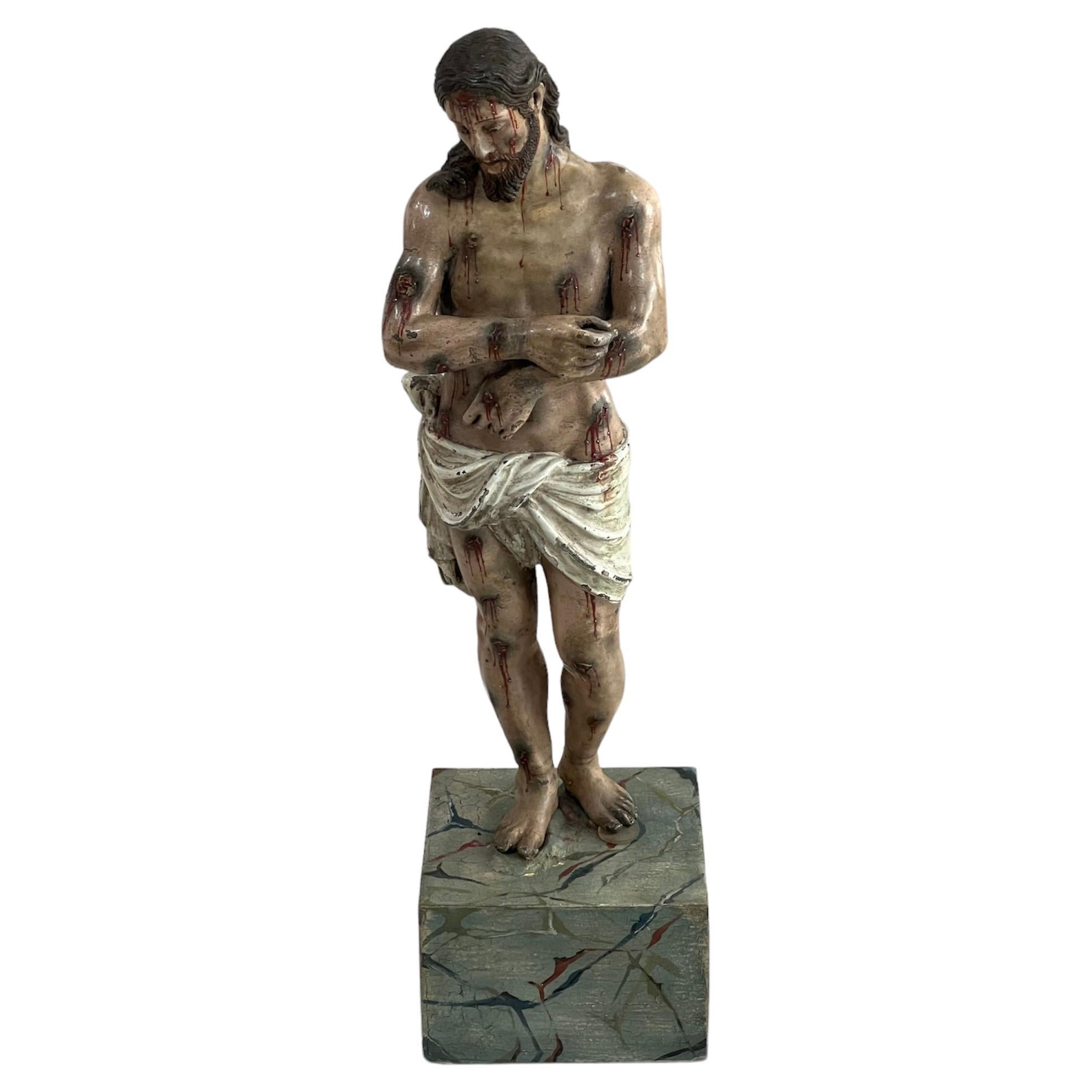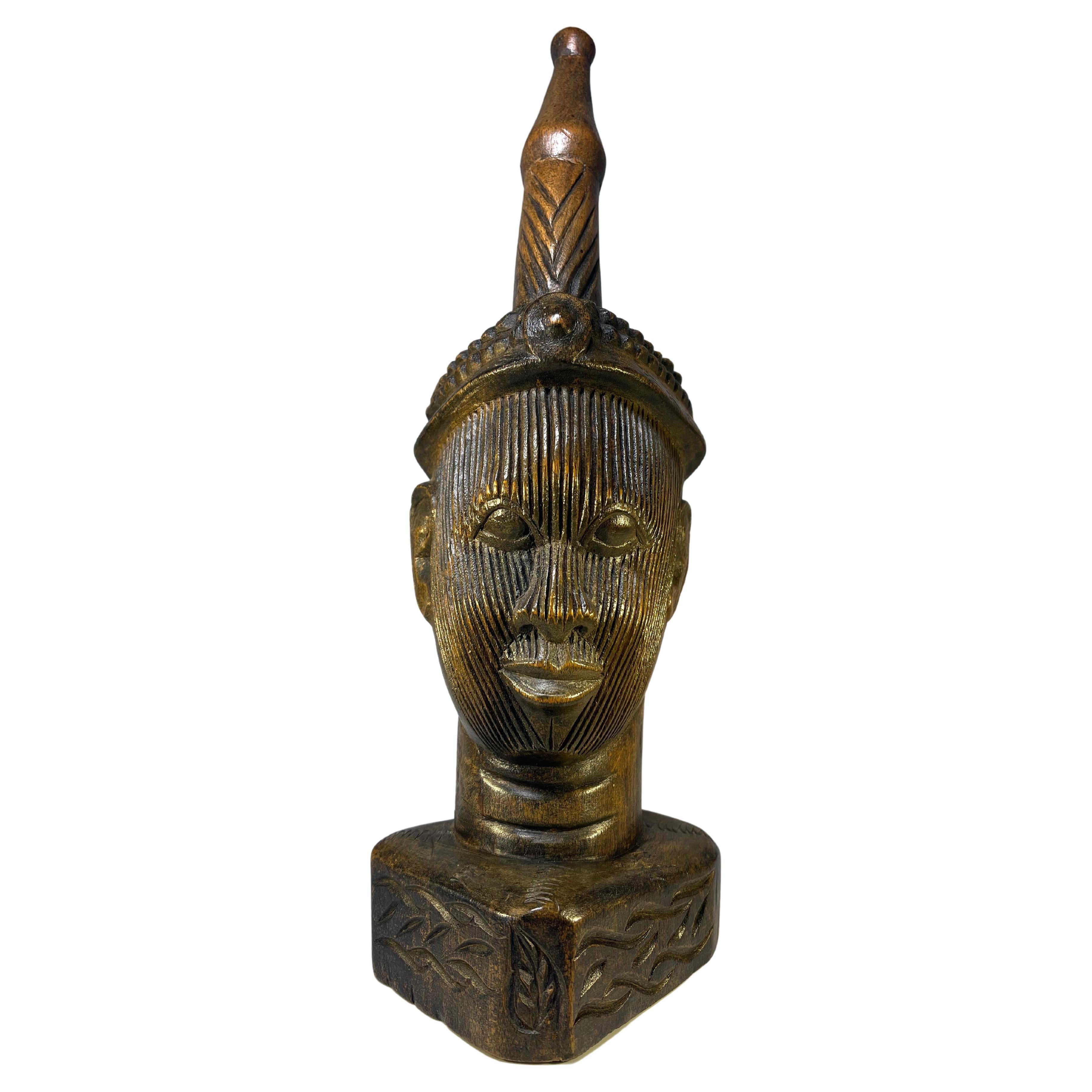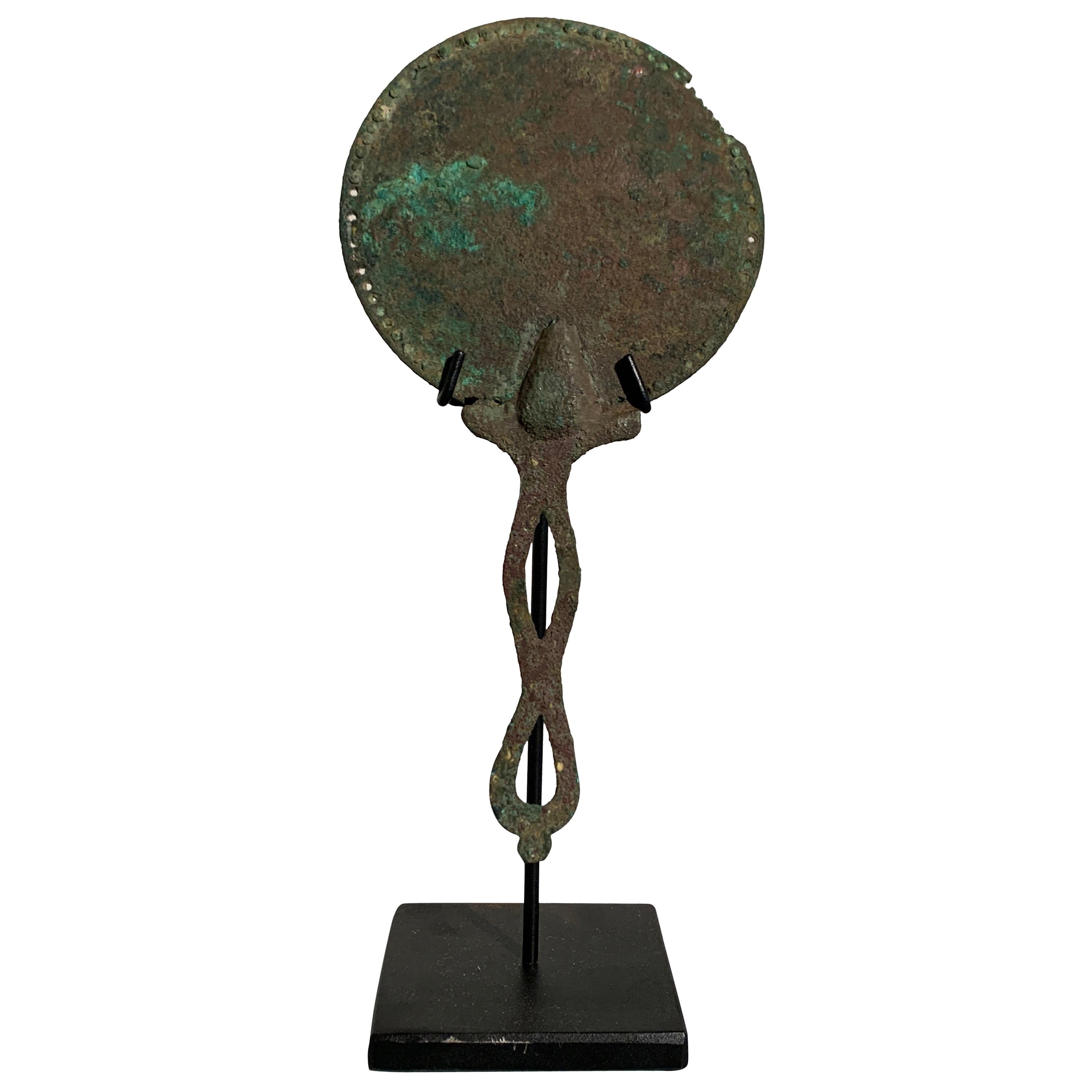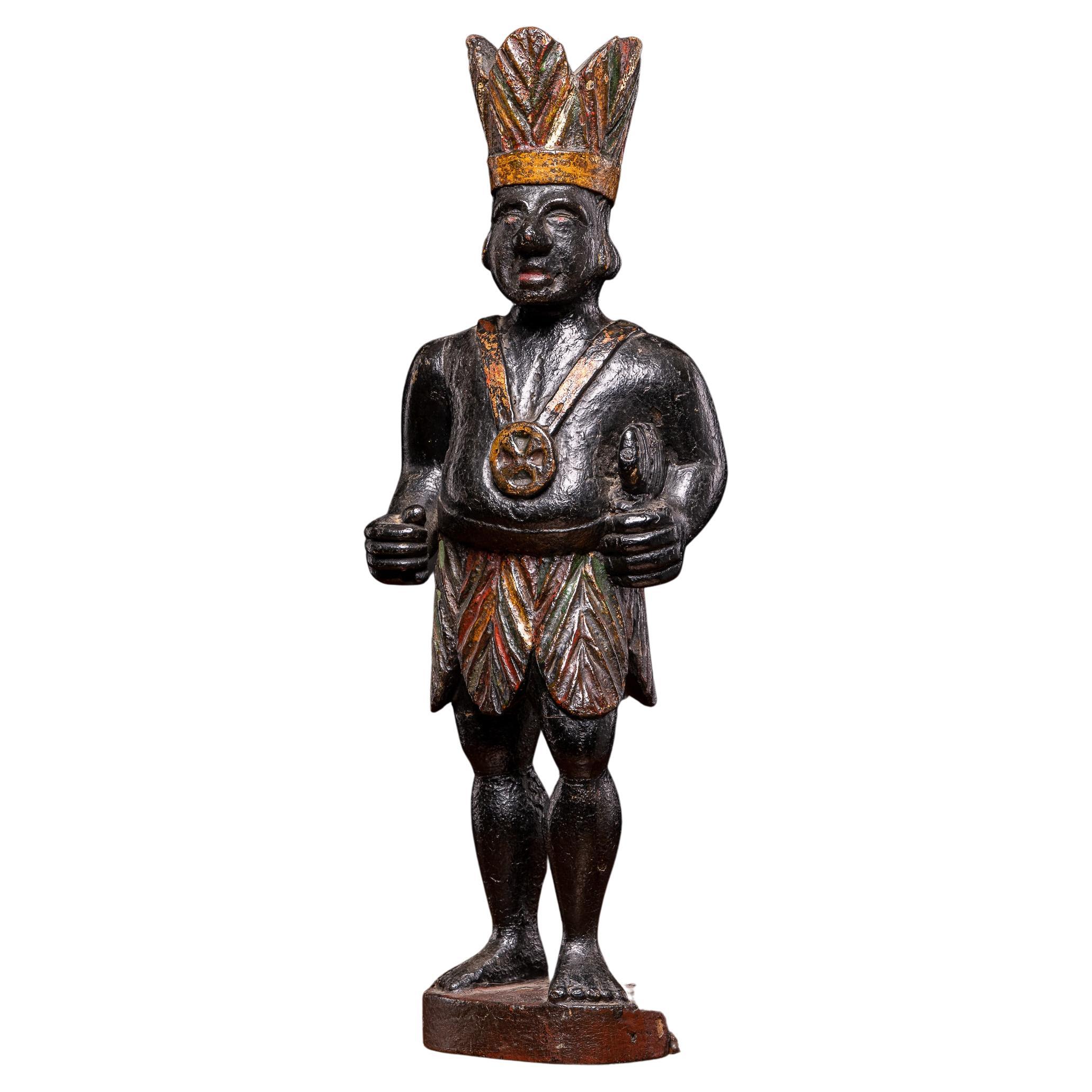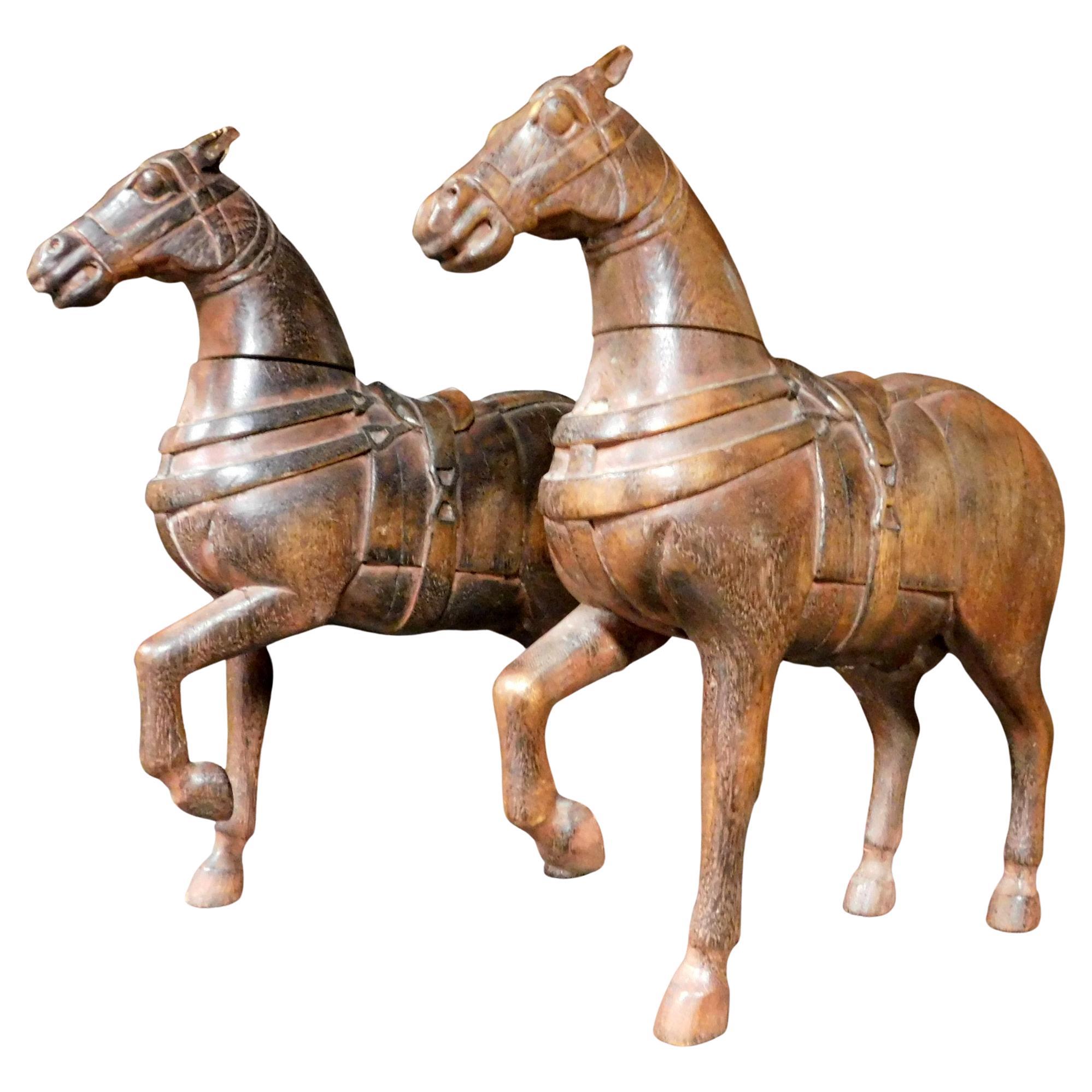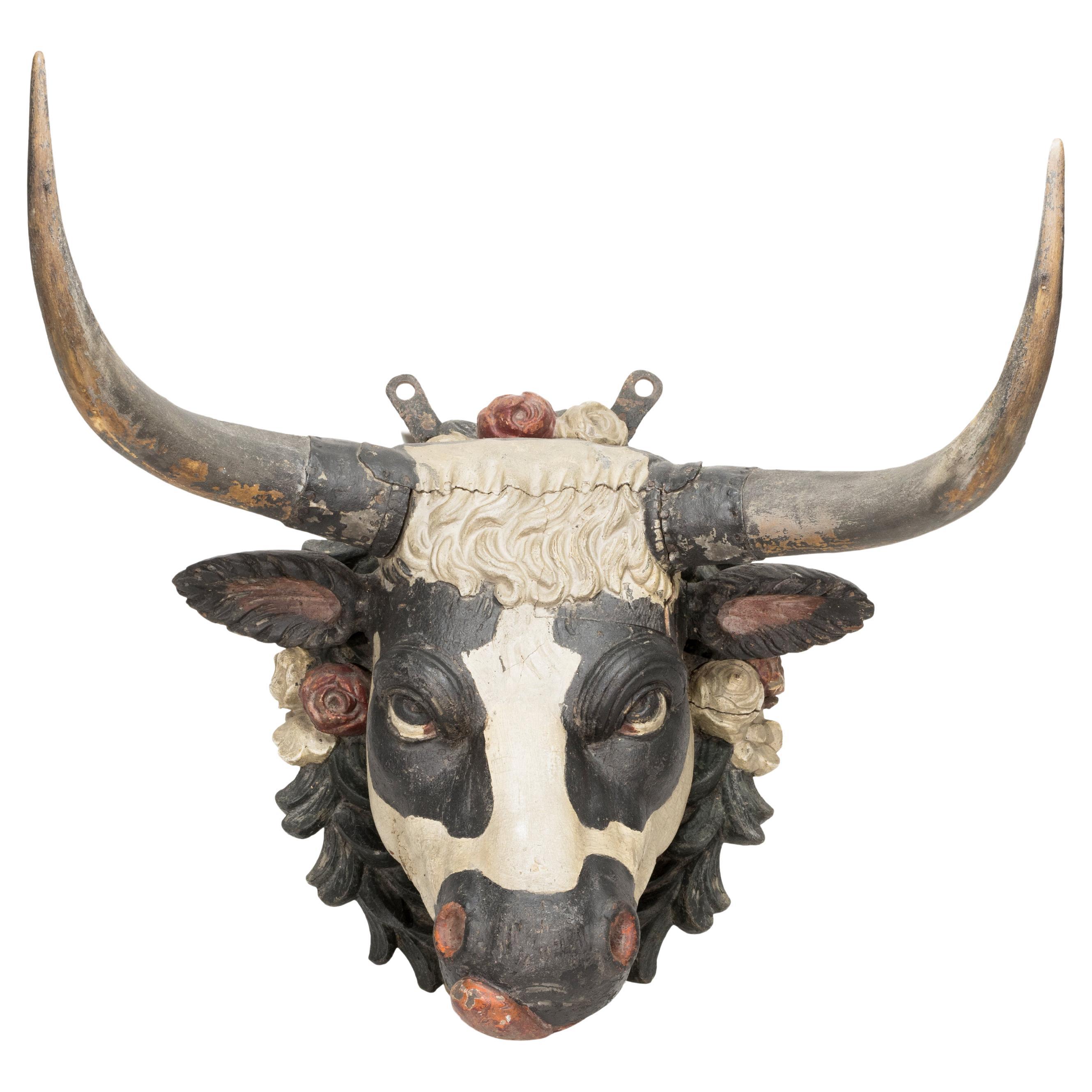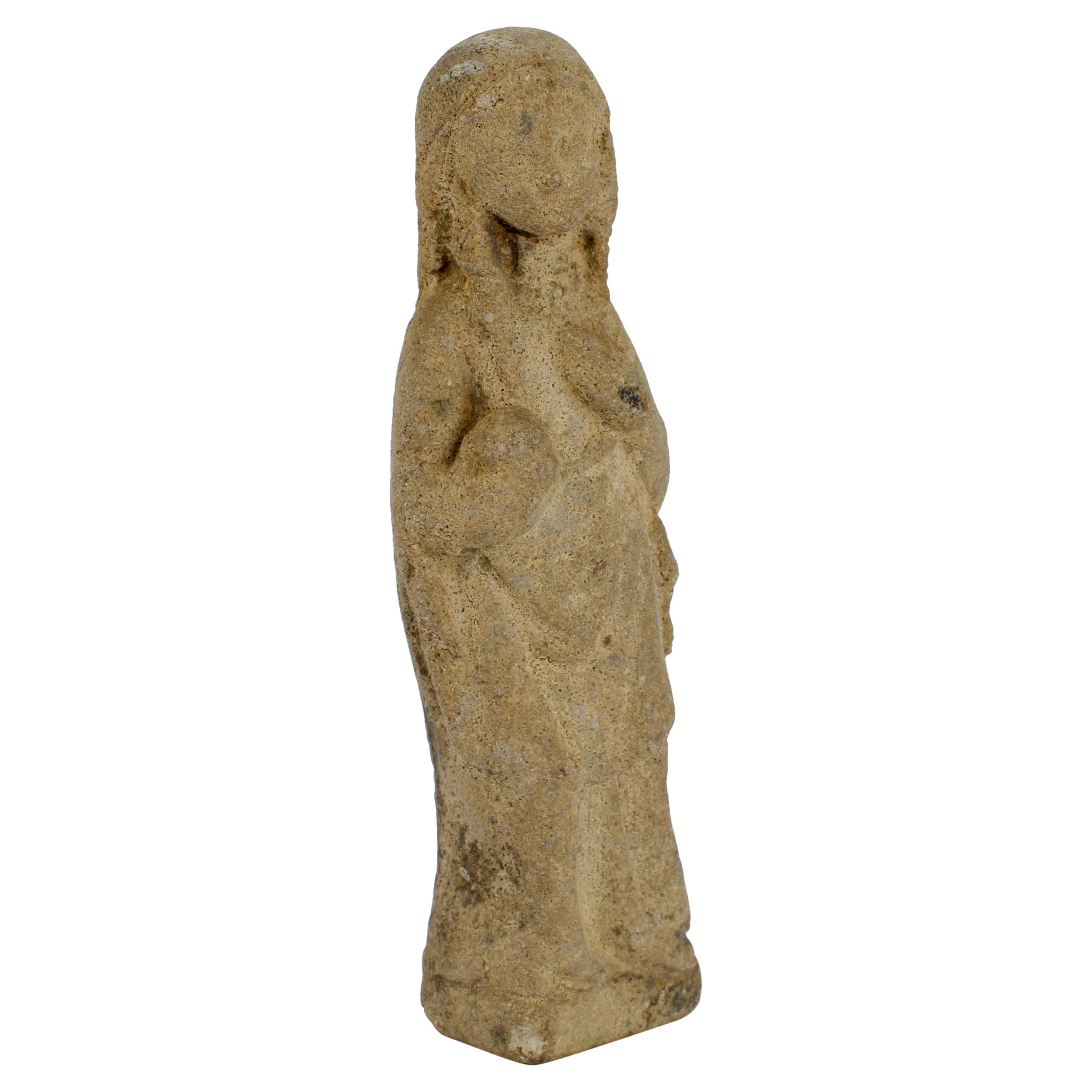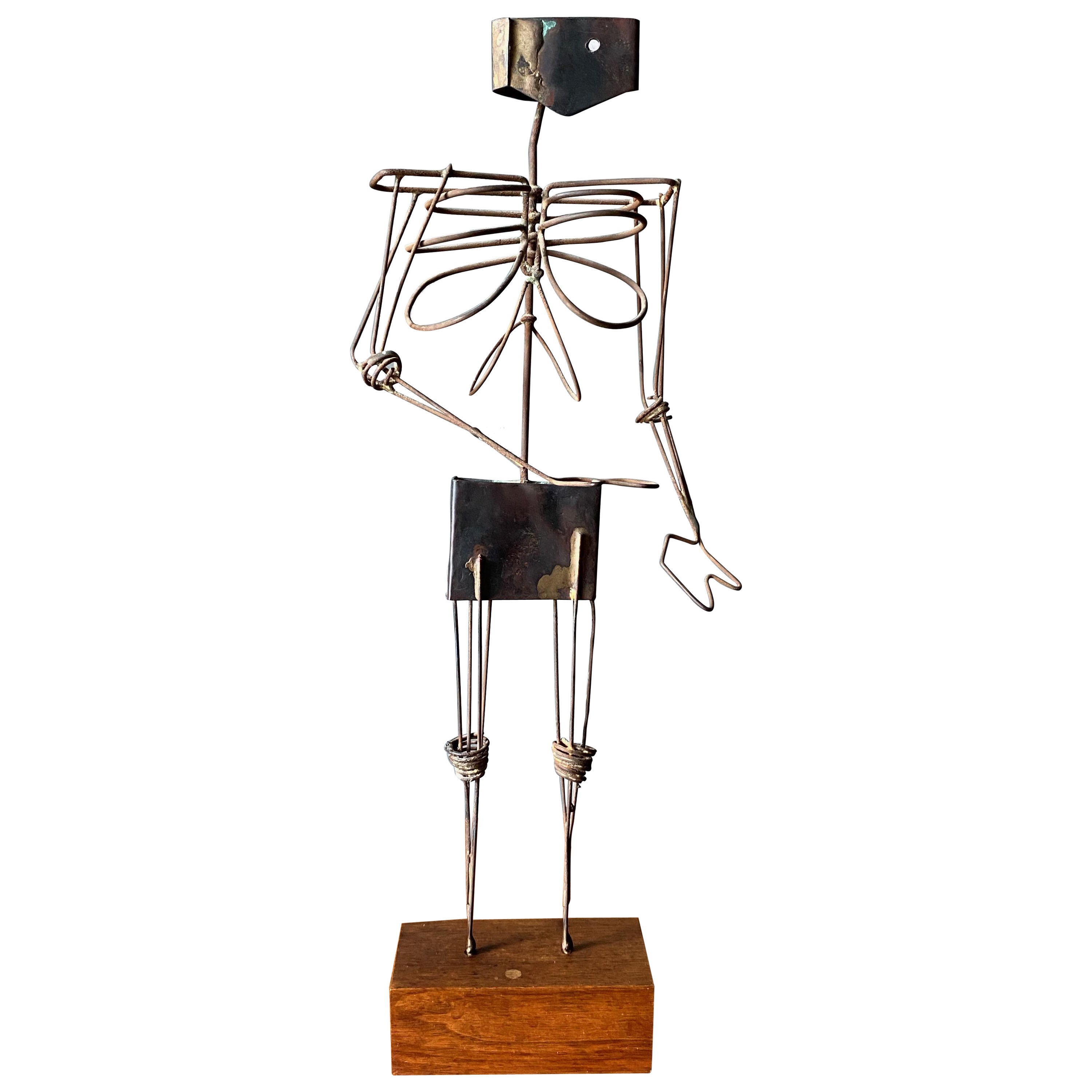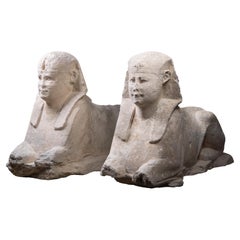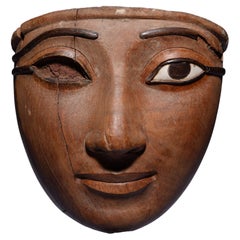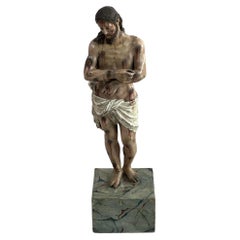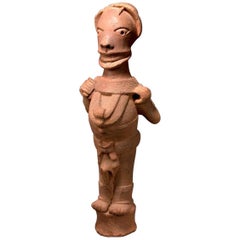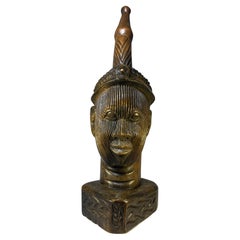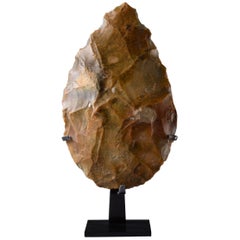
Paleolithic Homo Erectus Flint Hand Axe, 800, 000 BC
View Similar Items
Want more images or videos?
Request additional images or videos from the seller
1 of 6
Paleolithic Homo Erectus Flint Hand Axe, 800, 000 BC
About the Item
- Dimensions:Height: 7 in (17.78 cm)Width: 3.5 in (8.89 cm)Depth: 2.5 in (6.35 cm)
- Style:Egyptian (Of the Period)
- Place of Origin:
- Period:
- Date of Manufacture:800000
- Condition:
- Seller Location:London, GB
- Reference Number:1stDibs: LU1052210068281
About the Seller
5.0
Recognized Seller
These prestigious sellers are industry leaders and represent the highest echelon for item quality and design.
Established in 2008
1stDibs seller since 2014
100 sales on 1stDibs
Typical response time: 8 hours
Associations
LAPADA - The Association of Arts & Antiques DealersInternational Confederation of Art and Antique Dealers' AssociationsThe British Antique Dealers' Association
More From This SellerView All
- Ancient Egyptian Monumental Temple SphinxesLocated in London, GBA pair of monumental limestone sphinxes of Pharaoh Nectanebo I, from the processional avenue of the Serapeum of Memphis, 30th Dynasty, circa 379 - 360 BC. The sphinxes of the Serapeum have captivated travellers since Roman times. However, despite their significance, they are conspicuously absent from the collections of most major museums. Indeed, their existence in private hands is so improbable, and their imitations so numerous, that the present sphinxes were assumed to be modern copies throughout their recent ownership history. Finally recognised and conserved after an extraordinary chance discovery at a garden furniture sale...Category
Antique 15th Century and Earlier Egyptian Egyptian Figurative Sculptures
MaterialsLimestone
- Egyptian Head of a ManLocated in London, GBEgyptian head of a man, carved granite. 18th Dynasty, circa 1550-1292 B.C. Carved in beautiful dark granite, this head depicts an elite individual, perha...Category
Antique 15th Century and Earlier Egyptian Egyptian Busts
MaterialsGranite
- Exceptional Egyptian Sarcophagus MaskLocated in London, GBExceptionally Fine Wooden Sarcophagus Mask Third Intermediate Period, 21st Dynasty, circa 1069-945 BC. Acacia wood, rosewood, hippopotamus ivory Masterfully carved from a single piece of fine-grained hardwood, the present mask is characteristic of the most exquisite funerary art made during the 21st Dynasty, and was probably commissioned for a particularly high-ranking individual. The oval face displays a gently smiling mouth with full, outlined lips, furrows at the corners and a bow-shaped philtrum. The straight nose with rounded nostrils, the cheeks full and fleshy and the large, almond shaped eyes with heavy lids and tapering cosmetic lines, set below long, sweeping eyebrows. Social collapse across the Mediterranean in the Late Bronze Age meant that the 21st Dynasty in Egypt was a period of great turmoil. Trade routes were disrupted, governments collapsed, and mass migration occurred. Economic scarcity meant that traditional funerary practices in Egypt were also affected, with a lack of material and financial resources leading to the reuse of preexisting material. As a result, during the 21st Dynasty, 19th and 20th Dynasty coffins changed ownership rapidly and were heavily recycled for new purposes. Tombs were also unmarked allowing them to be shared by many people. These new practices brought forth a shift in the understanding of funerary paraphernalia. No longer important objects owned forever by the deceased, they were now simply seen as short-term transformative devices, whose symbolic and ritualistic meaning could be appropriated for others. However, paradoxically, the art of coffin-making also reached new heights during this period, and many of the richly dec- orated “yellow” coffins, characteristic of the 21st Dynasty, are remarkable works of art in their own right. Indeed, knowing that coffins were being reused throughout Egypt, the Egyptian élite set themself apart by commissioning lavish sarcophagi decorated with the images and texts meant to help guide them to the afterlife, and which would otherwise have adorned the tomb walls. As coffins were the chief funerary element which now identified the dead and allowed them a physical presence in the world of the living, their quality and appearance were of the utmost importance. The traditional coffin ensemble was made of three parts: a wooden mummy cover, which laid directly atop the mummy, an inner coffin, and an outer coffin, both made of a lid and case. Additional decorative elements, such as masks, were carved out separately and later glued or pegged to the lids. After the completion of the painted decoration, the sarcophagus was covered in a varnish to give it its yellow colour. Gilding was sometimes used for the coffins of the high priests’ families, notably on parts representing naked skin, such as the face mask. However, some of the élite tactically avoided gilding altogether as to ensure that their coffin would not be looted. When manufacturing the inner and outer coffins, particular attention was paid to the woodwork. Displaying the skill of the carpenter, this type of funerary art has largely remained unparalleled throughout Egyptian history. The principal wood used to craft the present mask is Acacia nilotica. The evergreen Egyptian acacia was considered sacred and said to be the tree of life, the birthplace of the god Horus, as well as symbolic of Osiris, the god of the dead and resurrection. The modelling of the face in the wood is superb, but the inlays also help mark this mask out as exceptional. Inlaid eyes and eyebrows were extremely rare and reserved to the finest and most expensive coffins. Traditionally, eyes were made of calcite, obsidian, or quartz, and eyebrows of coloured glass paste or bronze. Here, the pupils, eyebrows, and cosmetic lines are inlaid with Dalbergia melanoxylon, a rare type of wood which belongs to the rosewood genus. In antiquity, however, it was known as Ebony of the Pharaohs, from the Egyptian word “hbny”, meaning dark timber, because of its black, lustrous appearance. An extremely dense and hard wood requiring significant skill to work with, ebony was a luxury material highly coveted by the pharaohs themselves, to make furniture, decorative and funerary objects. The wood was imported with great effort from the southern Land of Punt, most likely modern Sudan, Ethiopia, Djibouti, and Eritrea, alongside other luxury goods such as gold and ivory. A magnificent ebony throne, recovered in the tomb of King Tutankhamun, illustrates the incredible aesthetic potential of this material and why it was so highly valued by Egyptian royalty. Only élite members of Egyptian society could have afford- ed Ebony of the Pharaoh inlays for their funerary mask. The sclerae on the present piece were once both inlaid with hippopotamus ivory. Whiter than elephant ivory, this type of ivory is also denser, and more difficult to carve. The use of this luxury material, reputed for its gleaming appearance, enhances the lifelikeness of the eyes. For the Egyptians, hippopotamus ivory was imbued with magic powers. The hippopotamus was indeed both feared and venerated due to its aggressive behaviour. Whilst the male hippopotamus was associated with danger and chaos, the female was benevolent and invoked for protection, especially of the house and of mothers and their children, through the hippopotamus goddess Tawaret. Thus, not only was hippopotamus ivory used as an inlay and to make practical objects, such as combs and clappers, but it was also used to make talismans like apotropaic wands or knives. Made during a time of scarcity where few could afford made-to-order coffins, the present mask could have only belonged to one of the highest-ranking individuals in society. Undoubtedly one of the finest Egyptian coffin...Category
Antique 15th Century and Earlier Egyptian Egyptian Figurative Sculptures
MaterialsFruitwood, Hardwood
- Ancient South Arabian Alabaster StatueLocated in London, GBSouth Arabian Calcite female figure 3rd Century BC to 1st century A.D. Calcite Alabaster height: 30.5 cm A magnificent alabaster female figure, a f...Category
Antique 15th Century and Earlier Yemeni Figurative Sculptures
MaterialsAlabaster
- Hellenistic Grotesque Theatre Mask of MaccusLocated in London, GBGrotesque theatrical mask of Maccus Late Hellenistic or Early Imperial period, circa 1st century B.C. – 1st century A.D., likely from Southern Italy. Terracotta with remains of pin...Category
Antique 15th Century and Earlier Italian Classical Roman Figurative Scul...
MaterialsTerracotta
- Giant Egg of the Extinct 'Elephant Bird'Located in London, GBAn exceptionally well preserved, unhatched egg of the Giant elephant bird, Aepyornis maximus. The now-extinct Aepyornis maximus, or elephant bird, wa...Category
Antique 15th Century and Earlier Malagasy Natural Specimens
MaterialsEggshell
You May Also Like
- Ecce HomoBy Spanish ManufactoryLocated in Guadalajara, Jalisco, MXBeautiful and carefully detailed polychromed wood ecce homo from 17th century SevilleCategory
Antique 17th Century Spanish Spanish Colonial Antiquities
MaterialsWood
$8,500 - Nok Terracotta Standing Dignitary Figure, TL Tested, Nigeria Africa 500-100 BCLocated in San Pedro Garza Garcia, Nuevo LeonNok Terracotta Standing Dignitary Figure in Royal Pose. I-II Century AD. Certificate of Authenticity with TL Test and Passport from Europe. Museum Piece...Category
Antique 15th Century and Earlier Nigerian Primitive Figurative Sculptures
MaterialsTerracotta
- Olokun Head, Kingdom of Ife, Western Nigeria Hand Carved HardwoodLocated in Rothley, LeicestershireFascinating detailed Olokun head from the Kingdom of Ife in Western Nigeria. Hand carved hardwood face with almond shaped eyes, neck creases and astounding facial incisions Circa 1...Category
Late 20th Century Beninese Folk Art Antiquities
MaterialsHardwood
- Antique Steel Elephant, Hand Made Elephant, India Arts & Craft, Decoration PieceLocated in ROTTERDAM, ZHThis steel Elephant is a stunning piece. This is an item you just want to own and place in your home, bar or shop. It is hand made in most probably India in the late 1920's. It used ...Category
Vintage 1920s Indian Anglo-Indian Animal Sculptures
MaterialsSteel, Cut Steel
- Roman Bronze Hand Mirror with Beautiful Patina, circa 1st CenturyLocated in Austin, TXA simple and elegant Roman bronze hand mirror, late Republic Period, circa 1st century, Italy. The bronze mirror of simple form. The round face with a pierced border design. The openwork handle...Category
Antique 15th Century and Earlier Italian Classical Roman Antiquities
MaterialsBronze
- Group of Six Example of Wooden Articulated Dummie’s Hands. Italy, 1940.Located in Milan, ITA group of six samples of articulated hands for dummies, made in various types of wood: national walnut, chestnut, maple. Mounted on bases, made of cast iron, iron and brass for the ...Category
Mid-20th Century Italian Figurative Sculptures
MaterialsBrass, Iron
Recently Viewed
View AllMore Ways To Browse
Antique Hand Axe
Antique Furniture Boulder
Flint Tool
Axe Flint
Collection Reproductions
Mayer Art Nouveau
Carved Fragment
Vintage Display Deco
Antique Museum Display
Industrial Service
Mid Century Modern Reproductions
Sand Stone
Vintage Industrial Photos
Wood Artifacts
Metal Display Stand
Wooden Ornaments
Reproduction Art Deco
Tall Mounted Objects
